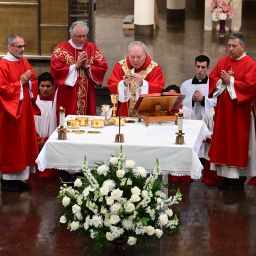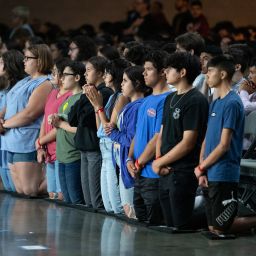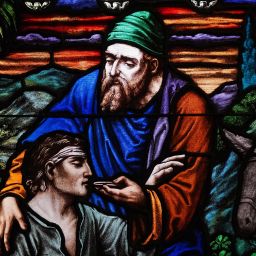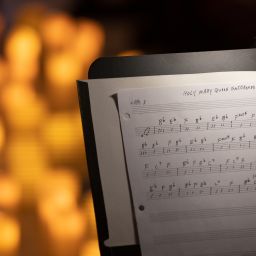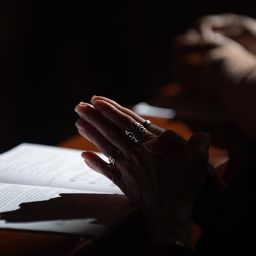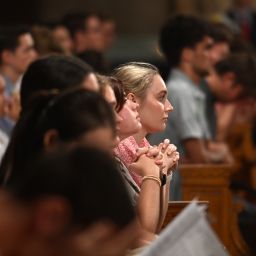By Father Jacob Dankasa
Special to The Texas Catholic
When I was completing my doctoral studies in information science, the concept of Artificial Intelligence was present, but certainly not pervasive. We discussed it academically, more as a theoretical framework than a practical tool. Today, AI is everywhere. It has become a part of our daily interactions, our learning systems, our communications, and even our worship spaces.
As an information scientist, I studied how people seek, evaluate, and use information. We explored topics like information availability, overload, credibility, and system design. In essence, we asked: How can we help people find what they need — and know whether they can trust it?
Today, our information systems have been revolutionized by AI. I call it a blessing, because AI has the potential to accelerate human knowledge, reduce burdensome tasks, and democratize access to complex systems. With a single prompt, AI can analyze vast data sets, summarize dense articles, or assist with creative writing. It’s powerful. It’s impressive. But like all power, AI must be used wisely.
A double-edged sword
When misused — or uncritically embraced — AI can undermine the very faculties that make us human: our reasoning, our creativity, and our moral judgment. Used irresponsibly, it risks turning us into passive consumers of synthetic information rather than thoughtful participants in the pursuit of truth.
I use AI, and I appreciate its capabilities; but I also approach it with caution. I’ve seen how AI can be used to manipulate thoughts, simulate personalities, and generate believable falsehoods. What troubles me most is how easily it can deceive even the educated and discerning.
One of the gravest dangers of AI is the rise of “deepfakes” and manipulated content: altered videos, images, and audio that appear to be real. AI-generated news stories can mimic real journalism; cloned voices and synthetic images can replicate public figures — including religious leaders like the pope. We are entering a time where “seeing is believing” is no longer a reliable standard.
A pastoral concern
As a Catholic priest, I’ve witnessed this firsthand. Parishioners have approached me, excited or disturbed by a video clip they saw of Pope Francis, or even more recently, Pope Leo XIV. “Did you hear what the pope said?” they ask. When I examine the clip, I sometimes find that it’s a deepfake — his voice replicated, his face believable, but the message entirely fabricated.
Thankfully, my academic background in information science helps me engage these questions critically. But not everyone has that training; and I worry about the many faithful who are vulnerable to misinformation — not because they lack intelligence, but because they place their trust in what they believe to be credible.
Humans are naturally inclined to accept information that reinforces their beliefs. Psychologists call this confirmation bias; information scientists call it selective belief. And in the age of AI, confirmation bias/selective belief is being exploited on a terrifying scale.
The Church’s challenge
It’s no surprise, then, that one of the earliest concerns raised by Pope Leo XIV after his election was the unethical use of AI. He wisely called for global cooperation in developing safeguards to ensure AI serves the common good. His warning echoes what many in the Church now realize: that shepherding the faithful in a time of AI requires new vigilance, new discernment, and new pastoral strategies.
There are already dozens of AI-generated images and videos falsely depicting the Holy Father in words or situations that are completely fabricated. I imagine the Vatican press office is now burdened with the exhausting task of issuing rebuttals and clarifications — many of which will never reach the people who saw the original falsehoods. This is the new digital battlefield. So how do we remain informed — and not become dumb?
Four practical suggestions
Here are a few practices I use, both as a priest and as an information scientist:
- Treat everything you see online as suspect until verified. Don’t assume that a viral video, image, or story is true simply because it’s widely shared. Popularity is not a measure of credibility. Instead, verify through established news agencies’ websites. While major news networks have their biases — particularly in their commentary — they remain reliable sources for hard news. Ignore the editorial sections if necessary, but consult multiple outlets to triangulate the truth. For Church-related news, the Vatican News site is a reliable source for verification.
- Don’t share content just because it confirms what you believe. This is one of the easiest traps to fall into. If a video or post aligns perfectly with your views, stop and reflect. Could it be engineered for that very reason? Let verification – not emotional agreement — be your guide.
- Always apply critical thinking. If something seems too shocking, too perfect, or too inflammatory, take a step back. Ask questions. Who created this? For what purpose? What evidence supports it? Use your reasoning power and prayerful discernment.
- Let AI assist, not replace, your brain. AI can help you think more clearly, organize your ideas, or edit your writing – but it should never do all the thinking for you. Use AI as a tool, not a crutch. Creativity, reflection, and moral reasoning still require human effort.
Conclusion: Fighting back
We cannot stop AI, nor should we. Its benefits are immense and growing. But what we can resist is our own vulnerability — the temptation to let machines think for us, to accept too quickly, to share too readily, to stop discerning.
As disciples of Christ, we are called to be people of the truth. That calling now includes being digitally wise: discerning what we watch, read, and share, and helping others do the same. In the age of AI, staying informed is not just a matter of knowledge — it’s a moral responsibility.
Father Jacob Dankasa is the pastor of Holy Family of Nazareth Catholic Church in Irving.
Cutline for featured image: A message reading “AI artificial intelligence,” a keyboard and robot hands are seen in this illustration created on Jan. 27, 2025. The U.S. bishops in a letter to congressional leadership say that artificial intelligence must serve all of humanity. (OSV News photo/Dado Ruvic, Reuters)





